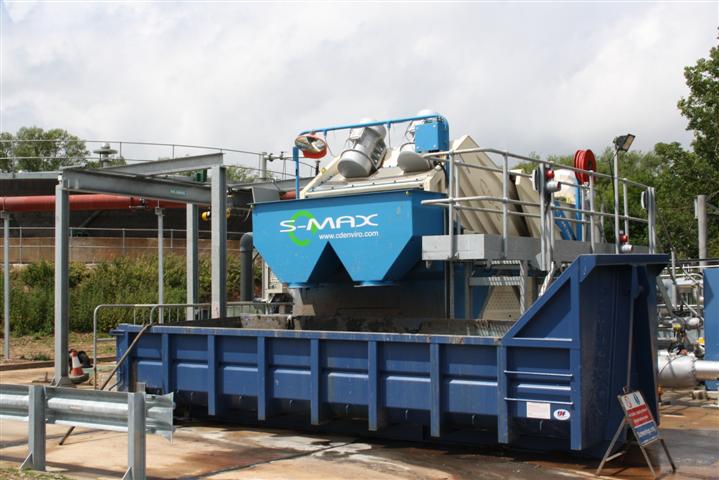Volume
235 m3/h
Material
Sludge Dewatering, Digester & Tank Cleaning
Output
Grit and Rag

THE CHALLENGE
Situated in West Midlands, England, water services company Severn Trent were experiencing blockages during sludge screening. This resulted in extended periods of plant downtime and additional costs of replacing parts to get the plant operational again. The costs incurred during this time were increased by the tankers containing the raw sludge for screening being diverted to alternative sites to be processed.

THE SOLUTION
The S:MAX sludge screen installed for Severn Trent has been in operation since June 2010.
The screening of imported sludge is a complicated process due to the nature of the material being processed with one of the key variables effecting plant performance being the level of dry solids contained in the sludge. The S:MAX has demonstrated a development of the capability offered in this area when compared to previously existing systems thanks to its ability to handle both a higher level of dry solids and cope with larger variations in the volume of screenings.
A unique back wash system on the S:MAX is also designed to ensure that the screens do not block with material. Blockages within existing sludge screening plants are the single biggest cause of increased operational costs and long periods of plant downtime. The S:MAX has addressed every point at which this is a problem and come up with a solution that offers a sludge screening system which eliminates blockages from the process.
Significant Reductions
Severn Trent have experienced significant reductions in the cost of operation and maintenance when compared to the sludge screening plant that the S:MAX has replaced. The previous system installed at Minworth was sized to cope with a dry solids content of 3% within the raw sludge. An analysis of the material processed by the S:MAX in the first 16 weeks of operation showed an average dry solids content of 4.1% with the highest level being 10.5%.
While the vast majority of material will fall within the 3% to 5% range the proven capability of the S:MAX to handle 10% dry solids within the raw sludge gives operators a great sense of comfort when it comes to specifying a new sludge screening plant.
Based on the previous plant in operation at Minworth an increase in dry solids content above 3% required that the feed rate to the screening plant be slowed down to ensure the material was effectively processed. It can be seen from the average dry solids content of material processed through the S:MAX that this involved a high degree of variation in feed levels with the previous plant.
As a result of this, the previous system could not accept feed directly from the tankers containing the raw sludge but instead required the installation of a separate reception tank in order that the flow rate could be modified as required. The S:MAX eliminates the requirement for a reception tank as material is discharged directly to the screening unit.
The S:MAX has the capability to accept feed from two tankers simultaneously through two independent connection points at the rear of the unit. This has the effect of minimising the standing time for tankers on site further enhancing operational efficiencies. This ensures that the tanker fleet is operational for as close to 100% of the time as is possible, improving productivity levels in a number of different areas independent of the actual sludge screening process.
The S:MAX operates at less than half the water pressure of the previous system installed at Minworth while also requiring less wash water. This allows for the system to be easily retrofitted to existing sites as the S:MAX does not require a high-pressure water pump to feed the system.

THE RESULTS
Since the installation of the S:MAX, Severn Trent have reported significant operational efficiencies as a result of increased screenings removal, elimination of blockages and reduced power and water requirements.
Severn Trent have seen a 300% improvement in the removal of screenings from raw sludge since the installation of the S:MAX. By ensuring screenings are effectively removed before material reaches the anaerobic digestion phase, Severn Trent are maximising the potential for the generation of energy from biosolids by reducing the level of biosolids contamination within the digesters. The benefits of effective screenings removal also include reduced operation and maintenance costs at the anaerobic digestion phase.
Further benefit has been gained from the reduced power requirement of the plant which once again has the dual benefit of reducing costs of operation while ensuring a minimal carbon footprint.




